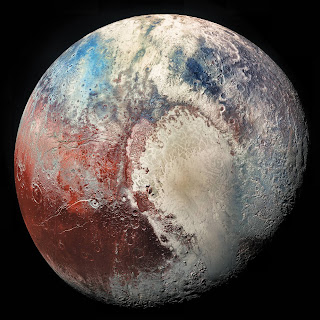Pluto Day
In 1905, astronomer Percival Lowell noted odd deviations in the orbits of Neptune and Uranus, so he theorized the existence of an unknown ninth planet. It wasn't until this day in 1930 that it was confirmed by Clyde Tombaugh.
The name was suggested by an 11 year old from Oxford, England. Her grandfather passed it on to Lowell Observatory, and they liked it!
Some astronomers questioned if Pluto could really be affecting the orbits of the larger planets, until they found its moon, Charon, in 1978. It was thought that maybe they were a double-planet system. But Pluto actually has five moons, including Styx, Nix, Kerberos, and Hydra.
NASA is now considering sending an orbiter to Pluto and then going for a deeper look into the Kuiper Belt.
This area is known as Sputnik Planitia, a vast plain of nitrogen ice. New Horizons estimated the ice to be six miles thick, and scientists found that it has actually redirected Pluto's orientation as it is so heavy. A subsurface ocean is the best explanation for this, but there isn't enough evidence yet to say for sure.
This lies in the larger area known as Tombaugh Regio, the heart seen by New Horizons. Astronomers theorize it is a fairly new landscape as it does not show evidence of meteorite impacts, as other regions do.
Since Pluto lacks the gravitational force to clear the area in its orbit, it was downgraded to a dwarf planet and is no longer considered the 9th planet in our solar system.







Comments
Post a Comment